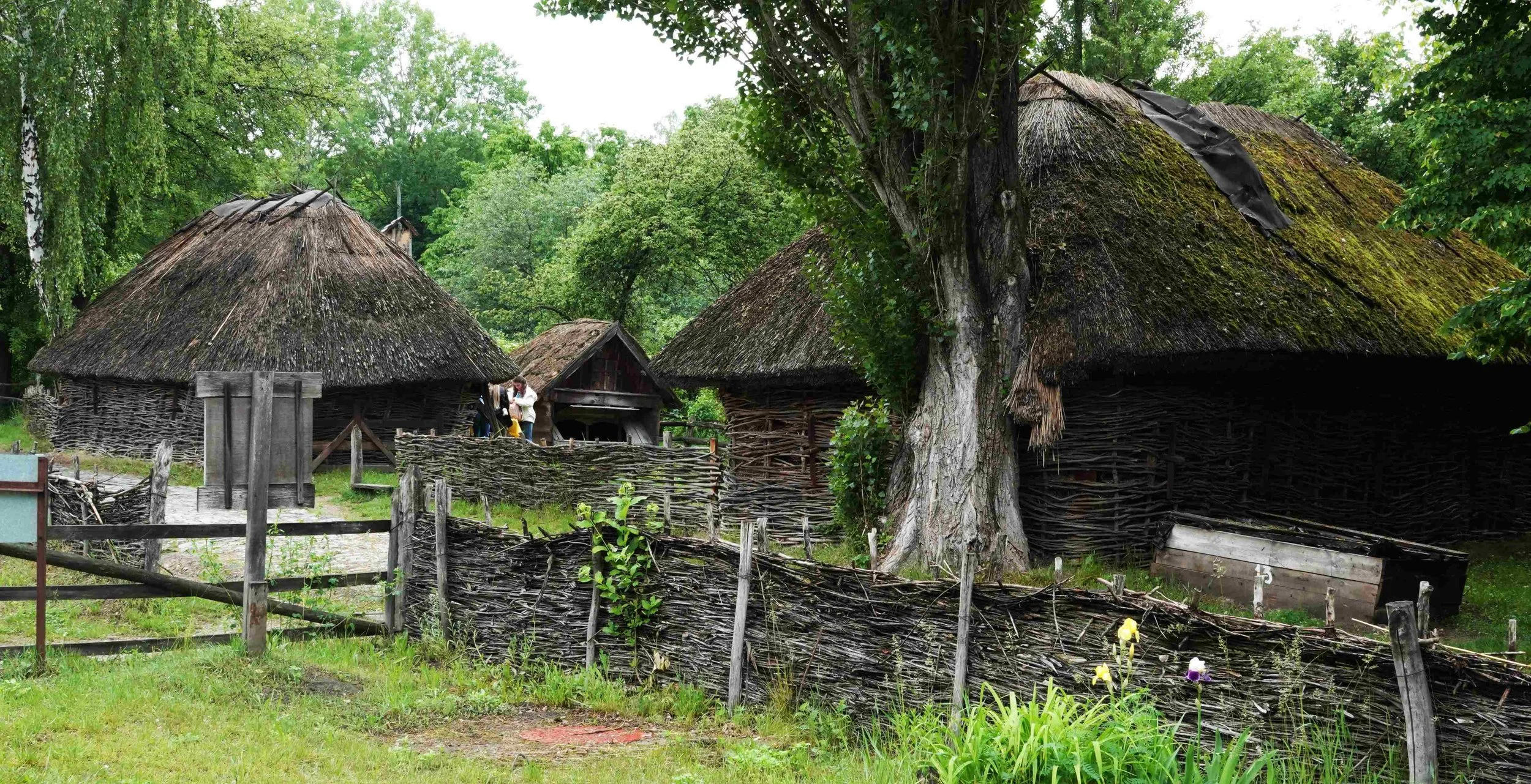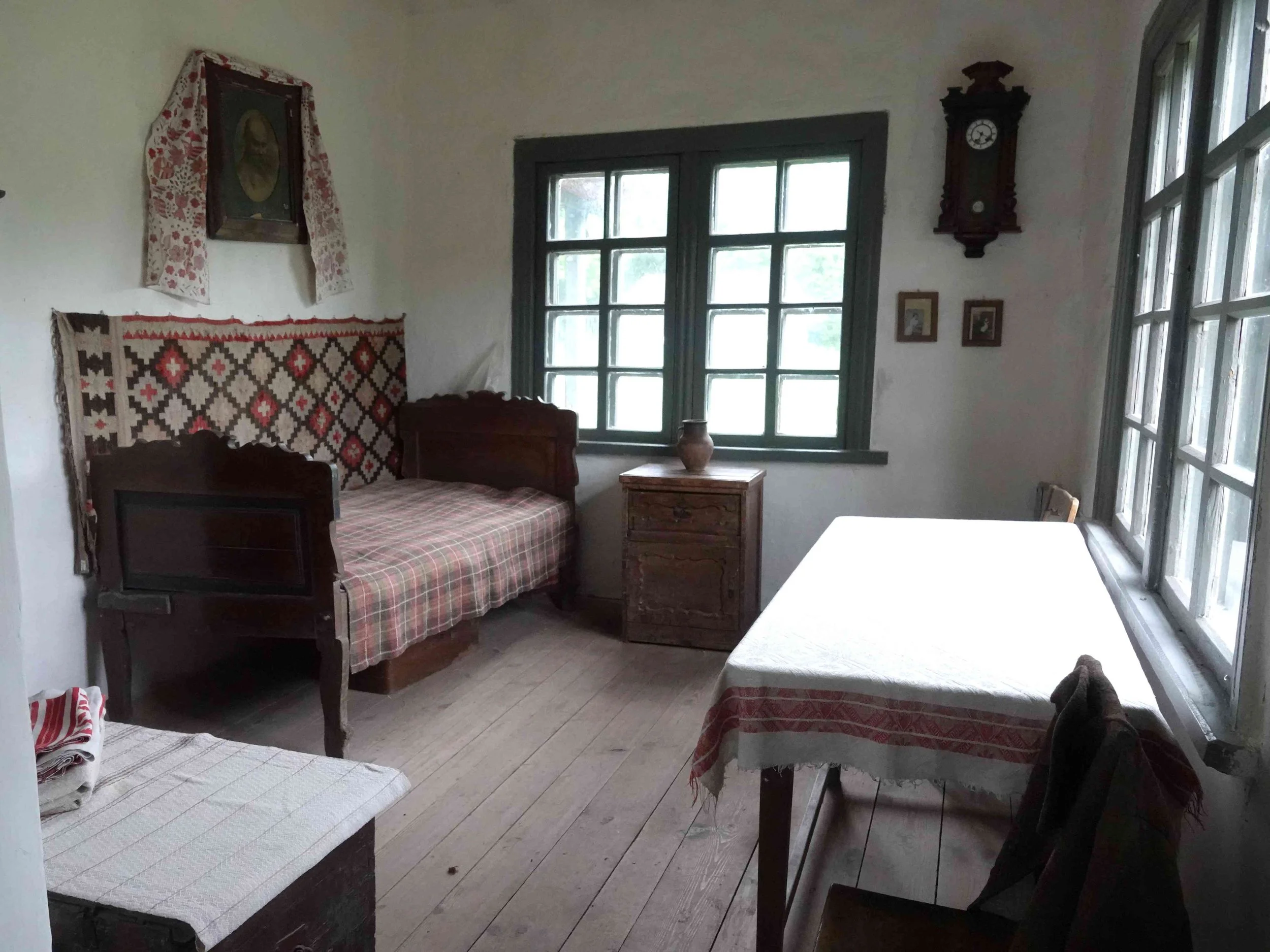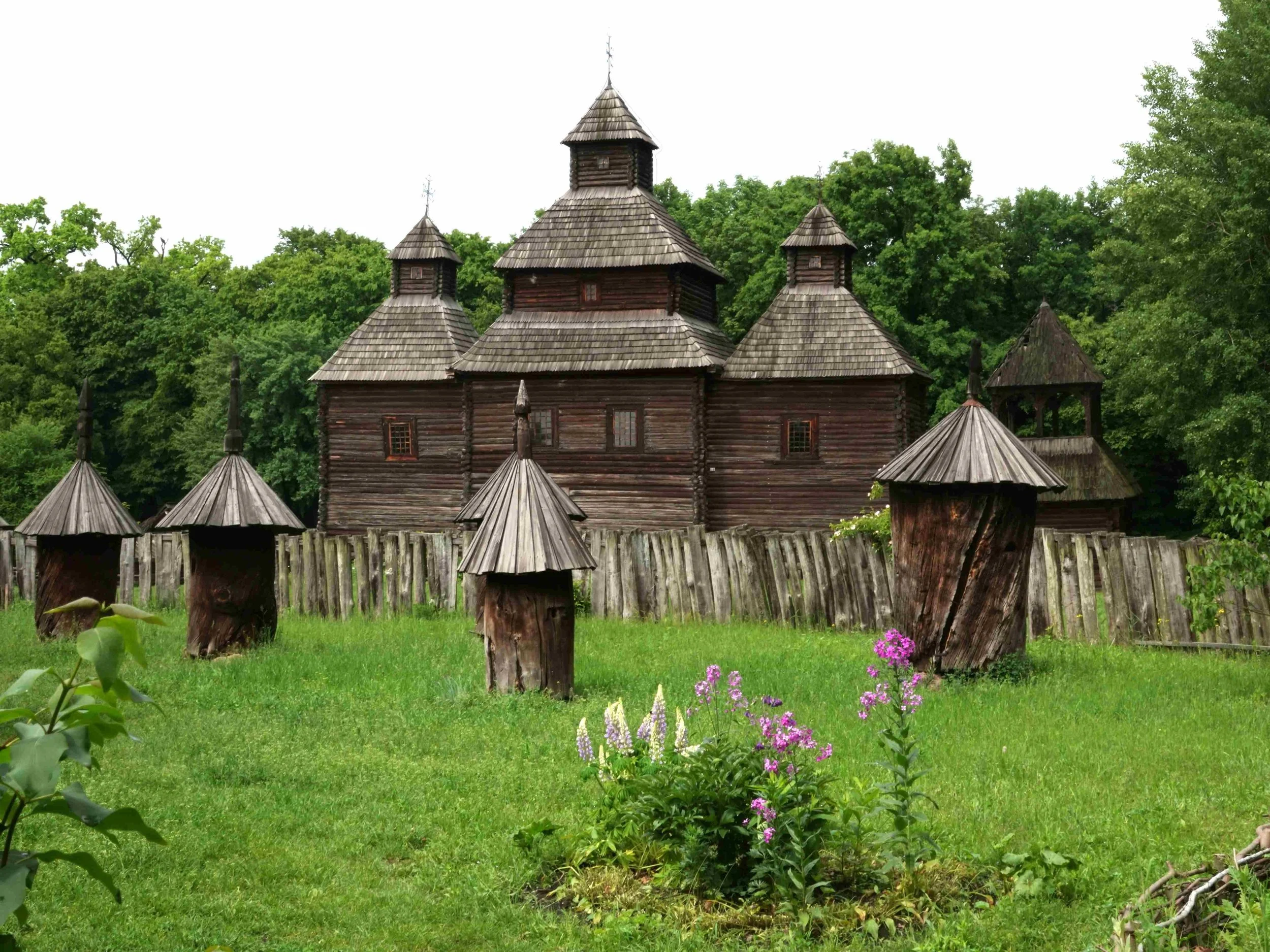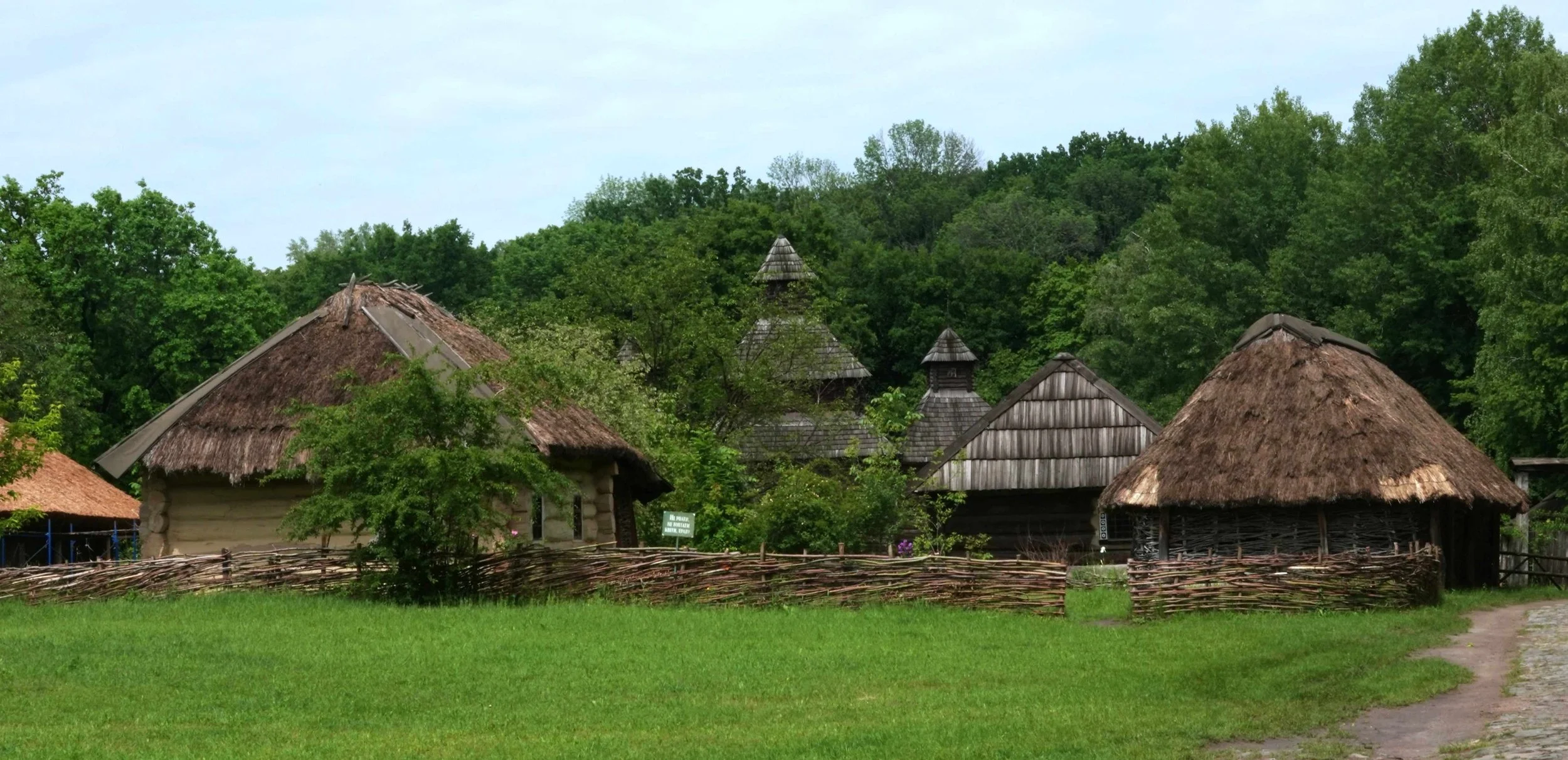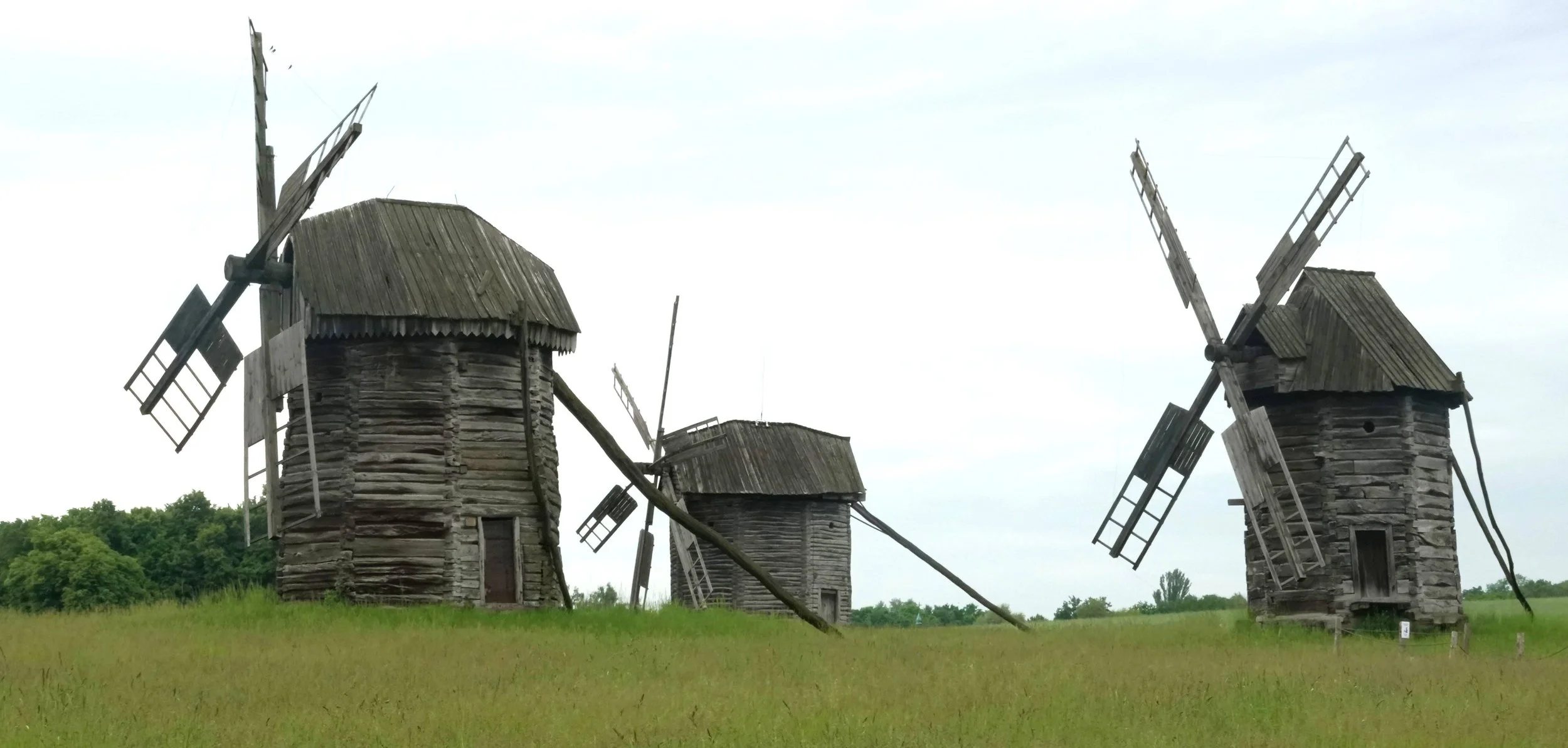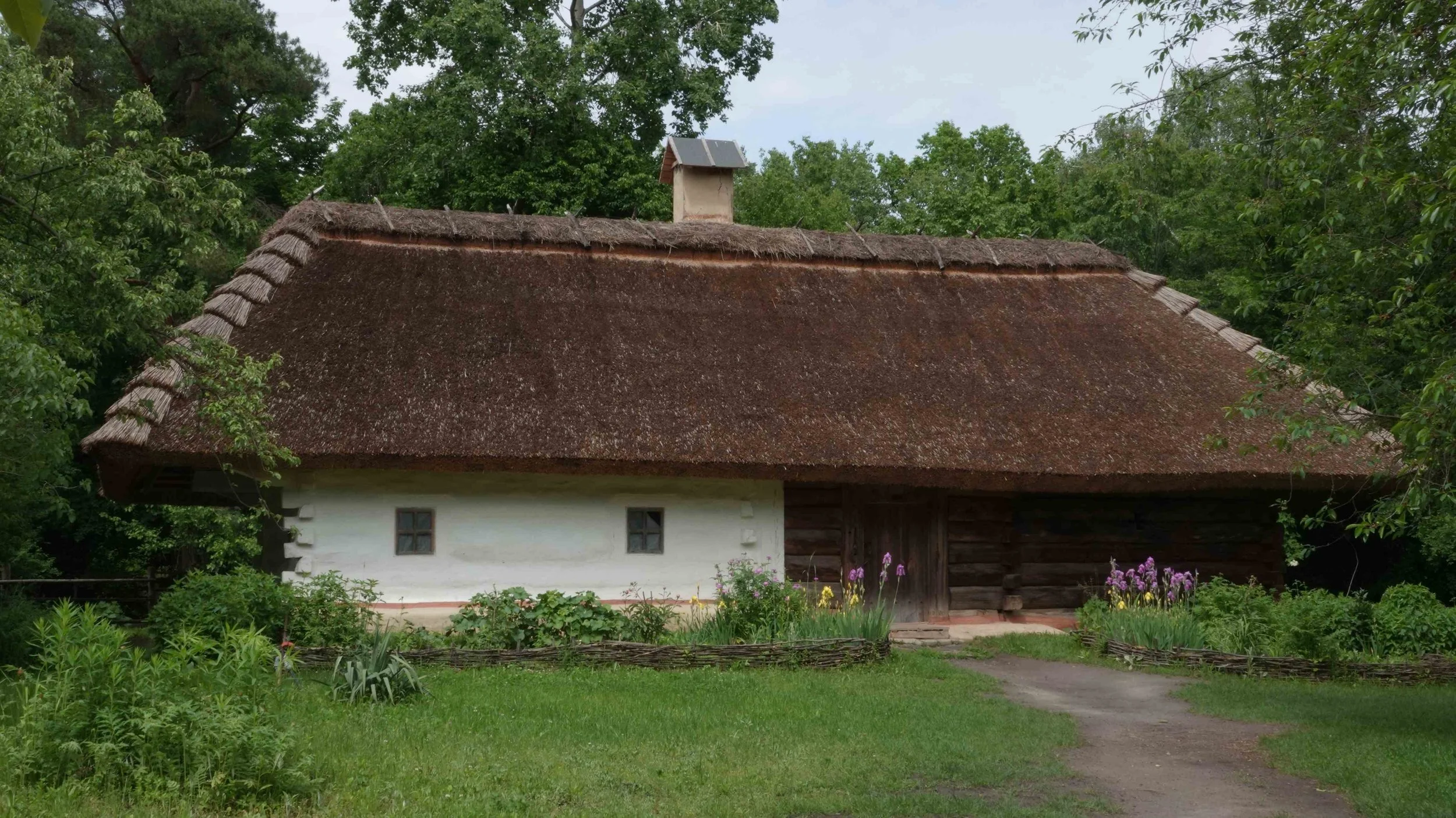Kyiv’s Open-Air Museum of Folk Architecture
On Kyiv’s southern outskirs is a collection of late 19th and early 20th century rural buildings from multiple regions, providing a window on the way the vast majority of people lived in this vast country before everything changed.
Just inside the entrance to the sprawling open-air museum, I met this woman, who makes most of her creations using corn husks. Susan’s and my wall and counter space at home are already jammed, and anyway few of these items would have made it home in my full pack in one piece. But when I told her I had driven an ambulance here, she insisted on giving me one of the horseshoes there as a gift. This is the kind of welcome I got everywhere during my visit.
The woman in the picture above, with a customer
A turn-of-the-century home of a prosperous private farmer in the very fertile Black Earth region of Ukraine and southern Russia. These are exactly the people whom Lenin and Trotsky, and later Stalin exterminated through starvation, stealing their seed corn and shooting any who protested.
But don’t confuse collectivized agriculture with Marxism. Marx said hardly a word about agriculture, he cared only about urban industry. But the countries that adopted Marxism weren’t those who had leapt ahead in the Industrial Revolution as Marx expected, they didn’t need it. Marxism took hold in backward agrarian societies that had missed the Industrial Revolution and hoped Marxism could propel them forward to catch up.
On that basis. Lenin decreed that far from withering away as Marx had predicted, the Party and state would become a permanent totalitarian body driving the nation forward.
And most Communist leaders were deeply ashamed of their countries’ peasant origins (unsuitable for Communism in Marx’s eyes) and therefore felt that slaughtering most of them was a necessary step — the few who survived would be tough enough to build Communism. The rest would be enslaved and starved to feed the urban proletariant and then dumped (in Trotsky’s words) “on the ash-heap of history”.
Locally-managed, kibbutz-style collective agriculture had existed in northern Russia for centuries, where the hostile climate and frequent crop failures required pooling of resources to survive. The Communists brutally centralised and imposed it on much wealthier peasants in Ukraine and southern Russia, but it is a Russian idea, not a Marxist one.
The Mykola’iv church (built 1763) from a village in the Chernihiv Region north of Kyiv, near the Belarus border.
A barn
A school field trip approaches the old schoolhouse in the rain
The Schoolmaster’s quarters in the schoolhouse
Intricate wooden architecture. Much of this is without nails, just wood fitted together.
Well built yet chimney-less homes from the Polissia region. Smoke doesn’t need an opening to dissipate through a thatched roof (in fact, if you leave a hole in a thatched roof for the smoke to escape, the updrafts will catch the roof on fire). But it takes a while for smoke to dissipate through thatch. In a tall-ceilinged Celtic roundhouse, there’s plenty of room high above head height for the smoke to collect. But I can’t imagine trying to breathe in these low-ceilinged houses.
A church from the Cherkasska Region, built in 1742

